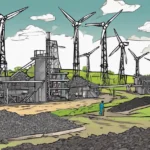Global Spotlight, 2025 — Activism has long served as the pulse of societal change, shaping political intentions and holding governments accountable. From climate strikes led by youth activists to movements advocating for social justice and human rights, activism has proven to be a powerful force in redefining political priorities. But in a world grappling with climate change, economic inequality, and geopolitical tensions, the question arises: How effectively is activism influencing political decisions on a global scale?
Across continents, activism is no longer confined to the streets. Social media has amplified its reach, compelling governments to respond to grassroots demands. The interplay between activism and politics highlights the crucial role of civil society in ensuring that leadership reflects the values of justice, equity, and sustainability.
Global Movements Driving Political Change
- Climate Activism and Policy Shifts
- Youth-led movements like Fridays for Future, initiated by Greta Thunberg, have pressured governments worldwide to adopt stringent climate policies.
- Impact: The European Union’s Green Deal and commitments to achieving net-zero emissions by 2050 are direct responses to sustained public pressure from climate activists.
- Case in Point: In 2024, the COP28 summit witnessed unprecedented participation from activist groups, leading to an agreement on phasing out coal by 2040.
- Social Justice Movements
- From Black Lives Matter in the United States to protests against gender-based violence in countries like India and Mexico, activism has compelled governments to address systemic inequalities.
- Impact: The conviction of high-profile cases of police brutality and the enactment of stricter laws against gender-based violence in 2023 highlight the tangible outcomes of activism.
- Global Peace and Anti-War Protests
- Activism opposing military aggression has gained momentum, particularly in the wake of ongoing conflicts in Ukraine and the Middle East.
- Insight: Global protests in 2024 demanded accountability for civilian casualties, pressuring international bodies like the United Nations to adopt stronger peacekeeping measures.
The Challenges Activists Face
- Government Crackdowns
- Many governments view activism as a threat to political stability, resulting in censorship, arrests, and violence against activists.
- Example: Protests in Myanmar and Iran have faced brutal crackdowns, with activists risking their lives to demand democracy and human rights.
- Polarization on Social Media
- While platforms like Twitter and Instagram amplify activist voices, they also foster misinformation and polarization, diluting the impact of genuine movements.
- Co-opted Movements
- Some movements lose momentum when political actors co-opt them for electoral gains, shifting focus from grassroots demands to partisan agendas.
How Activism Shapes Political Intentions
- Setting the Agenda
- Activism prioritizes pressing issues that may be ignored by political elites. Climate activists, for instance, have placed sustainability at the forefront of global policy discussions.
- Demanding Accountability
- Movements like India’s RTI Campaign have institutionalized mechanisms for transparency, ensuring that leaders remain answerable to the public.
- Bridging Gaps Between People and Power
- Activism connects marginalized voices to political decision-makers, ensuring that governance reflects the needs of diverse communities.
The Way Forward for Activism and Politics
- Fostering Collaboration
- Governments and activists must find common ground to drive meaningful change. Initiatives like citizen assemblies on climate policy in the UK are models of collaboration.
- Protecting Activist Rights
- Global organizations like Amnesty International and Human Rights Watch must continue advocating for the safety and freedom of activists worldwide.
- Leveraging Technology
- Activists can use data-driven tools to strengthen their campaigns, ensuring their demands are backed by credible evidence.
Conclusion: A Partnership for Progress
Activism remains a vital force in shaping political intentions, ensuring that leaders prioritize issues of global significance. As the world confronts challenges requiring immediate action, the synergy between activism and politics offers a pathway to justice, equity, and sustainability.
In 2025, the role of activism in governance is clearer than ever. The question is: Can political leaders rise to meet the demands of the people, or will activism continue to challenge the status quo until real change is achieved?












